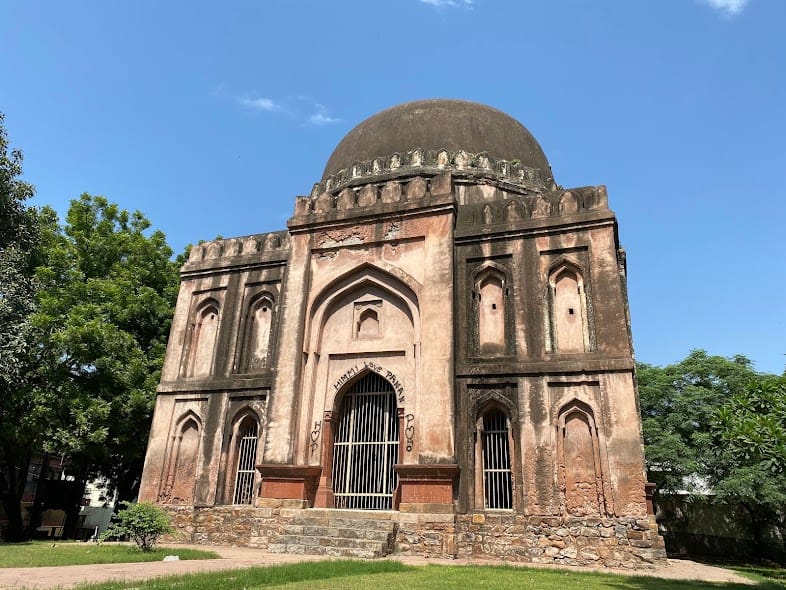
Kale Khan Ka Maqbara
Kale Khan Ka Maqbara: An Underrated Gem of Mughal Architecture in Delhi Tucked away in the rich historical landscape of Delhi lies Kale Khan Ka Maqbara, a lesser-known yet architecturally significant monument from the Mughal era. Nearest Bus Stand- Hazrat Nizamuddin Bus Stand, just 1 km away from the tomb. Nearest Railway Station- Hazrat Nizamuddin Railway Station, located around 1.5 km away. Nearest Metro Station: The nearest metro station is Jangpura Metro Station (Violet Line), around 2.5 km from the tomb.
The Kale Khan Maqbara, also known as the tomb of Kale Khan, is a relatively lesser-known mausoleum located near Humayun’s Tomb in Delhi. It is part of the larger necropolis surrounding the area that includes other Mughal and pre-Mughal tombs. Information: Kale Khan was a nobleman during the reign of the Mughal emperor Humayun. He is believed to have served as a chief architect or official in charge of construction activities during this period. The tomb reflects the Mughal architectural style, with a mix of Indo-Islamic elements, although on a smaller scale compared to other grand Mughal tombs. The structure is made of red sandstone with intricate stonework typical of the era. It is adorned with geometric patterns and inscriptions. Kale Khan Maqbara is not as elaborately maintained as Humayun's Tomb, but it still holds historical significance, especially due to its proximity to the larger heritage sites in the area. Establishment: The tomb was built in the 16th century, around the time of the later Mughal emperors. Its exact date of construction is unclear, but it falls within the time frame of Mughal tomb architecture that flourished during and after Humayun's reign. The tomb is part of a cluster of Mughal-era funerary monuments, highlighting the importance of the area as a royal burial ground.

